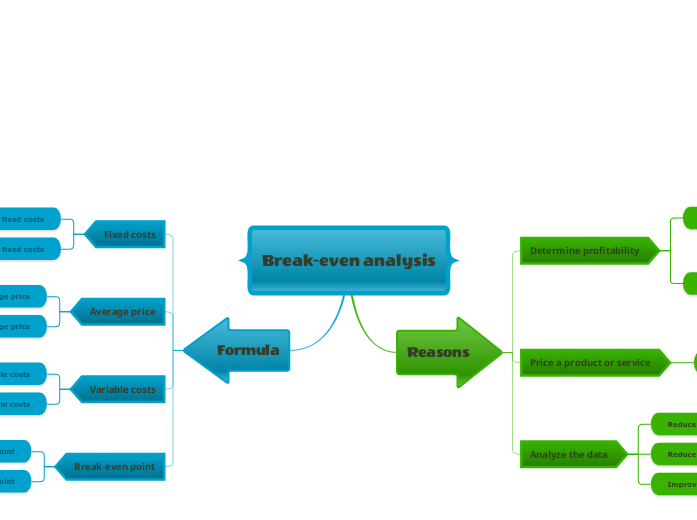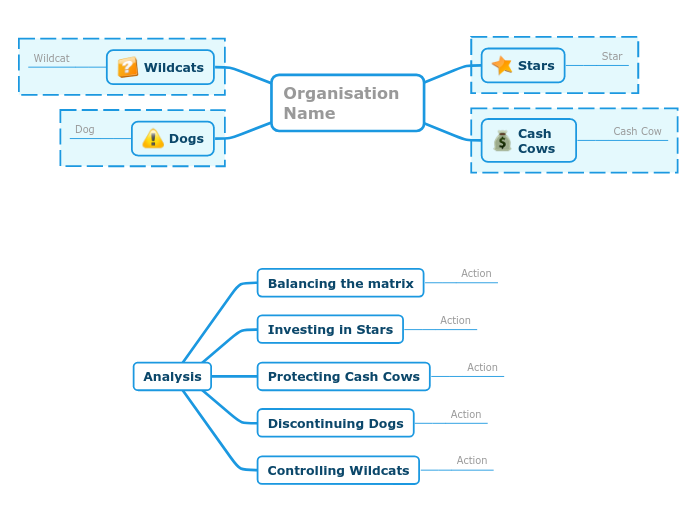Break-even analysis
Starting any business has a price. Be prepared to cover those costs.
Formula
Use this formula to find the break-even point.
Fixed Costs / (Average Price – Variable Costs) = Break-Even Point
Break-even point
Determine break-even point
What is the break-even point?
The break-even point is the level of production at which the costs of production equal the revenues for a product.
Fixed Costs / (Average Price – Variable Costs) = Break-Even Point
Variable costs
Type variable costs
What are the variable costs?
Variable costs are costs that change as the quantity of the good or service that a business produces changes. Variable costs are the sum of marginal costs over all units produced.
Average price
Type average price
What is the average price?
To calculate the average purchase price of your shares you have to divide the total amount invested by the total number of shares bought.
Fixed costs
Fixed expenses or costs are those that do not fluctuate with changes in production level or sales volume.
They include such expenses as rent, insurance, dues and subscriptions, equipment leases, payments on loans, depreciation, management salaries, and advertising.
Type fixed costs
What are the fixed costs?
Fixed expenses or costs are those that do not fluctuate with changes in production level or sales volume.
They include such expenses as rent, insurance, dues and subscriptions, equipment leases, payments on loans, depreciation, management salaries, and advertising.
Reasons
Analyze the data
The Break-even analysis helps you analyze the data.
Improve sales
To improve the sales in your business, focus on the customers, and shift to increasing sales performance.
How can you improve sales?
Choose from the ideas below or add others.
Focus on the existing customersLearn about competitorsInnovation and unique productsCultivate valueBuild a customer service approachCustomer relationsPromotionMarketingProvide credible products
Reduce the variable costs per unit
How can you reduce the variable costs per unit?
Variable cost per unit is the production cost for each unit produced that is affected by changes in a firm's output or activity level.
Unlike fixed costs, these costs vary when production levels increase or decrease.
Reduce overall fixed costs
How can you reduce your overall fixed costs?
The success of a business rests on its ability to adjust and adapt to improve earnings.
Examples of fixed costs:
- Rent or mortgage
- Labor cost
- Insurance
- Property taxes
- Interest
- Advertising
- Standing orders
- License or membership fees
Price a product or service
The Break-even analysis helps you price a product or service.
Competitor name
Do some research and find competitor's prices.
Then try to establish your prices.
Price
What are the competitor's prices?
Determine profitability
The Break-even analysis helps you determine profitability.
Profit vs. loss
The profit and loss (P&L) statement is a financial statement that summarizes the revenues, costs, and expenses incurred during a specified period, usually a fiscal quarter or year.
Which products or services turn a profit and which ones are sold at a loss?
Generated revenue
Type idea
Revenue generation is one of the most important activities any business can engage in.
It is defined as a process by which a company plans how to market and sell its products or services, in order to generate income.
How much revenue do you need to generate to cover all your expenses?








